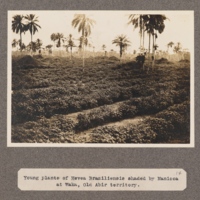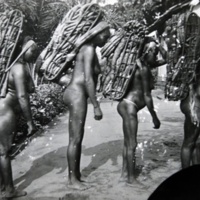
Carriers of Culture: Women, Food and Power from the Congo Basin, Museum of Archaeology and Anthropology, Cambridge University (October 2016 – March 2017)
Exploring the role of women and food from the Congo basin in the past and today, MAA’s first exhibition in our rebranded spotlight gallery is co-curated with the Congo Great Lakes Initiative.
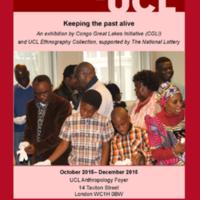
Keeping the Past Alive, UCL Anthropology Foyer (October 2015 - December 2015)
Keeping the Past Alive is a partnership between University College London's Ethnography Collection and Congo Great Lakes Initiative. The exhibition reflects the stories that Congolese community members share as and how they interact with objects, either personal, provocative or relational. It is divided into three topics: traditional power objects, sacred rituals and medicine, and everyday life. The objects on display tell stories, sometimes with a metaphor of their own, which will, we hope, make visitors internalize and discuss the messages they bring. This exhibition is the final step of our collaboration with Congo Great Lakes which started one year ago. During the project, an interactive platform which can host online exhibitions has been developed. The platform collects archives and documentation and shares the data with Horniman and UCL Congolese collections and members of CGLI.
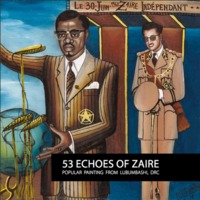
53 echoes of Zaire: Popular Painting from Lubumbashi Democratic Republic of Congo, Sulger-Buel Lovell Gallery, London (27 May – 30 June 2015)
Popular Painting is a genre traceable to the 1920s, which chronicles contemporary social and political realities in Congo (then Zaïre). This art movement remains very little known outside the continent. Scholars have dedicated their research activities to Popular Painting. They often knew the main actors of the movement in the early 1970s, and shared this knowledge by publishing articles, books and exhibition catalogues. “ During a brief period between the late sixties and the late seventies, popular genre painting bloomed in the urban and industrial Katanga region of the Democratic Republic of the Congo Artists, most of them self-educated, produced paintings (acrylics or oils on canvas reclaimed from flour sacking) for local use. Through a limited number of recurrent topics, they articulated a system of shared memories.
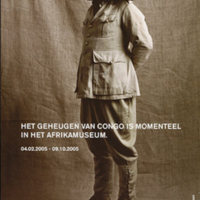
The Memory of the Congo in the Colonial Era, Royal Museum for Central Africa, Tevuren, Belgium ( 4 February 2005 - 9 October 2005)
With this exhibition, the RMCA aims to contribute to the highly topical debate concerning the colonial history of Congo and Belgium.
Visitors learn more about this controversial period through little-known objects, works of art, documents, films, and photographs. Filmed interviews with Belgians and Congolese give a voice to the past in a lively confrontation with memories and emotions. Memory of Congo, through specific themes and diverse narratives, revisits this turbulent chapter in history
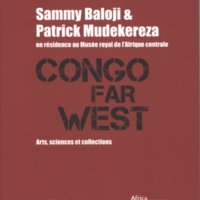
Artists in Residence. Sammy Baloji & Patrick Mudekereza,
Congo Far West, Royal Museum for Central Africa, Tevuren, Belgium (11 May – 4 September 2011)
In this exhibition the artists Sammy Baloji and Patrick Mudekereza present us with a contemporary take on the colonial past. As artists in residence in the museum they got carte blanche in the museum collections. In dialogue with scientists from the museum they have started working with a few collection pieces dating from the beginning of Congo’s colonial history. These collection pieces exhale the atmosphere of the conquest of Congolese territory by the West. The leitmotif of the exhibition ‘Congo Far West’ refers not only to this territorial conquest, but also to the contemporary Congolese artists who artistically and intellectually recapture the collection pieces conserved in the West.
Patrick Mudekereza is a writer and poet but he also writes texts for comic strips, exhibitions and audiovisual art. During his time in the museum he is working on a hybrid sculpture entitled L’art au Congo which raises a whole host of questions, and treaties signed with a cross which sealed the transfer of land from the local chefs to Leopold II. Photographer Sammy Baloji is working on a series of photographs and watercolours from a colonial exhibition led by Charles Lemaire. He has already exhibited in cities such as Paris, Bamako, Brussels, Cape Town and Bilbao. A Beautiful Time, his first solo exhibition in the United States, taking place in the Museum for African Art in New York, will be on show in in the Smithsonian National Museum of Natural History in Washington in 2012. Sammy Baloji and Patrick Mudekereza both live and work in Lubumbashi in DR Congo. Together they are organising the photography biennale Rencontres Picha in Lubumbashi, the third edition of which will take place in 2012.
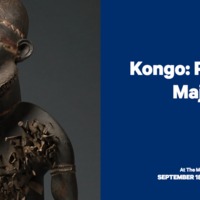
Kongo: Power and Majesty, Metropolitan Museum of Art, New York (18 September 2015 - January 3 2016)
Central Africa's Kongo civilization is responsible for one of the world's greatest artistic traditions. This international loan exhibition explores the region's history and culture through 146 of the most inspired creations of Kongo masters from the late fifteenth through the early twentieth century.
The earliest of these creations were diplomatic missives sent by Kongo sovereigns to their European counterparts during the Age of Exploration; they took the form of delicately carved ivories and finely woven raffia cloths embellished with abstract geometric patterns. Admired as marvels of human ingenuity, such Kongo works were preserved in princely European Kunstkammer, or cabinets of curiosities, alongside other precious and exotic creations from across the globe.
With works drawn from sixty institutional and private lenders across Europe and the United States, Kongo: Power and Majesty relates the objects on view to specific historical developments and challenges misconceptions of Africa's relationship with the West. In doing so, it offers a radical, new understanding of Kongo art over the last five hundred years.
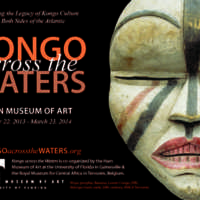
Kongo Across the Waters, Princeton Art Museum (25 October 2014 - 25 January 2015)
Kongo across the Waters examines 500 years of cultural exchange between the Kongo, Europe, and the United States, showing the rise of Kongo as a major Atlantic presence and the transmission of Kongo culture through the transatlantic slave trade into American art.
Drawing from the incomparable collections of the Royal Museum for Central Africa in Tervuren, Belgium, including masterpieces that have never before been seen in the United States, this groundbreaking exhibition investigates how the Kingdom of Kongo in West Central Africa evolved over five centuries and contributed to the cultural life of enslaved Africans and their descendants in North America. Manuscripts, maps, engravings, photographs, and videos provide contextual information, and the accompanying 448-page catalog further explores the art of the Kongo and of the Kongo diaspora.
Kongo across the Waters is a joint project organized by the Samuel P. Harn Museum of Art, University of Florida, Gainesville, Florida, and the Royal Museum for Central Africa, Tervuren, Belgium, and is supported by an indemnity from the Federal Council on the Arts and the Humanities. At Princeton, supplementary interpretive content has been developed by the Princeton University Art Museum. The exhibition at Princeton has been made possible by generous support from the National Endowment for the Arts; the Frances E. and Elias Wolf, Class of 1920, Fund; Susan and John Diekman, Class of 1965; the David A. Gardner ’69 Magic Project; the Department of Art and Archaeology, Princeton University; and an anonymous fund. Additional funds have been provided by the Allen R. Adler, Class of 1967, Exhibitions Fund; Heather and Paul G. Haaga Jr., Class of 1970; Holly and David Ross; Andrew W. Mellon Foundation; the New Jersey State Council on the Arts/Department of State, a Partner Agency of the National Endowment for the Arts; and by the Center for African American Studies, the Program in African Studies, the Office of Religious Life, the Lewis Center for the Arts, and the Department of English, Princeton University. Further support has been provided by the Partners and Friends of the Princeton University Art Museum.
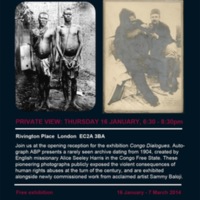
'When harmony goes to hell'. Congo Dialogues: Alice Seeley Harris and Sammy Baloji, Rivington Place, London (16 January - 7 March 2014)
Autograph ABP presents a rarely seen archive dating from 1904, created by English missionary Alice Seeley Harris in the Congo Free State. These pioneering photographs publicly exposed the violent consequences of human rights abuses at the turn of the century, and are exhibited alongside newly commissioned work from acclaimed contemporary Congolese artist Sammy Baloji.
In the early 1900s, the missionary Alice Seeley Harris produced what was probably the first photographic campaign in support of human rights. She exposed the atrocities that underpinned King Leopold II’s regime in the Congo Free State, bringing to public attention the plight of the Congolese people under a violent and oppressive regime.
These photographs fundamentally shifted public awareness of the deep-rooted hypocrisy of King Leopold II’s promise of colonial benevolence, and caused an outcry at the time of their publication in Europe and America.
Over 100 years later, these issues remain of primary concern to Congolese citizen and artist Sammy Baloji. Like Harris, Baloji uses photography as a medium to interrogate current political concerns with reference to the past. Acclaimed for his photomontage works that juxtapose desolate post-industrial landscapes with ethnographic archival imagery, Baloji explores the cultural and architectural ‘traces’ of a country forever haunted by the spectres of its colonial past; in particular, the southeastern Katanga province and its capital, the city of Lubumbashi.
In this new body of work-in-progress, commissioned by Autograph ABP, Baloji continues to investigate the colonial legacies and fractured histories that haunt contemporary Congolese society. Notions of African utopias, post-colonial disillusionment, and a quest for authenticity amidst ‘the ruins of modernity’ define Baloji’s multi-layered practice: the impact of Western imperialism, Maoist communism, urban segregation and colonial sanitation politics as well as the unending mineral exploitation of the Congo’s natural resources, and with it the tragedies and traumas of state-controlled violence and ongoing human rights abuses.
Congo Dialogues marks the 175th anniversary of Anti-Slavery International and the invention of photography. The first major solo showcase of Sammy Baloji’s work in the UK, this exhibition presents a unique opportunity to see both historical and contemporary works interrogating the Congo and its colonial legacies. The Alice Seeley Harris archive was last shown to the public 110 years ago.
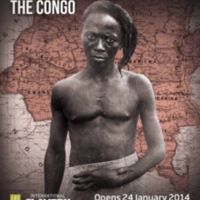
Brutal Exposure, International Slavery Museum, Liverpool (24 January 2015 - 7 June 2015)
This haunting exhibition documented the exploitation and brutality experienced by Congolese people under the control of Leopold II of Belgium in the 1900s. The photographs, by missionary Alice Seeley Harris, were at the time a radical and significant shift in the representation and understanding of the impact of colonial violence in the Congo, and exposed the deep-rooted hypocrisy of so called 'colonial benevolence' which cost the lives of millions of Congolese. The campaign led to public pressure and international scrutiny of Leopold’s administration, which came to an end in 1909.
The legacy of Belgian violence and exploitation would tragically re-emerge years later after the Congo gained independence in 1960, with the murder of the country’s first legally elected Prime Minister, Patrice Lumumba.
European exploitation of the Congolese people and resources has shaped the country's recent history and the effects are still evident today.
This exhibition was developed in partnership with Autograph ABP and Anti-Slavery International.
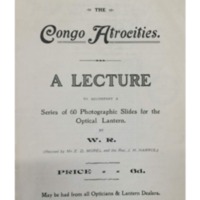
John H. Harris and E. D. Morel, The Congo Atrocities: A lecture to accompany a series of 60 photographic slides
The Congo Atrocity Lantern Lecture was devised by the British missionary couple Reverend John Harris and his wife Alice Seeeley Harris. Based on their time spent in the Congo Free state, it combined her atrocity photography with witness statements from a variety of sources. The lecture toured Britain and proved so popular that a standard set of lecture notes was developed so that the talk could be delivered by different speakers. The lecture icluded material designed to promote awareness of the brutal slave labour regime that occurred under King Leopold II. It also included material promoting British missionary activities in the area. The language and the accompanying slides were part of a discourse on the European 'civilising mission' and were used to justify the expansion of the colonial project as well as antislavery sentiment.
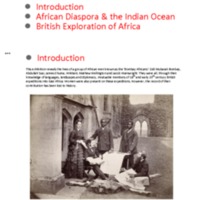
Bombay Africans
Bombay Africans 1850-1910 was exhibited at the Royal Geographical Society as part of the wider ‘Crossing Continents: Connecting Communities’ project, which with community partners aimed to develop new resources to advance the importance of geography. Based on the research of Clifford Pereira and with community consultation partners, Bombay Africans explored the histories of a group of African men who assisted British explorers such as John Hanning Speke, Richard Burton and David Livingstone on mapping expeditions in East Africa in the late 19th century. The name 'Bombay Africans' was given to Africans who had been rescued from the slave ships operating in the Indian Ocean. The exhibition examined the roles of these men in the anti-slavery movement and in Christian organisations like the Church Missionary Society. Focusing on the East Coast of Africa and the slave trade routes in the Indian Ocean, the exhibition also explored enslavement, forced migration, liberation and the African diaspora in the Asian subcontinent.
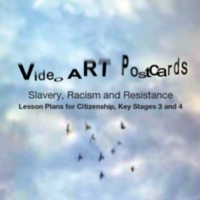
Video ART Postcards
To mark the bicentenary, Manifesta (a not for profit company delivering projects addressing cultural diversity) and the Runnymede Trust (an independent policy research organisation focusing on equality and justice) joined forces to launch a youth and digital media initiative, Video ART (Anti-Racist Trails) Postcards. The project explored connections between slavery, colonialism and contemporary issues of racism and related injustice. In the summer of 2007, two groups of teenagers aged 14-19 from the London Borough of Newham participated in workshops to uncover sites related to historical racism and anti-racism in the West India Docks area of London, assisted by video artists and historians. Using video for self-expression, each participant interpreted this history and heritage by producing a short personal video or 'postcard' - there were 33 videos in total. The videos were made available on an online resource, and a Teacher's Guide was created to be used alongside the website.
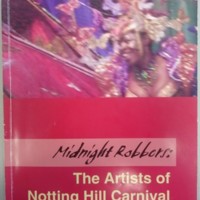
Midnight Robbers: The Artists of Notting Hill Carnival
Midnight Robbers was exhibited at City Hall, London in 2007 and the Ohio State University Urban Art Space in 2008. The exhibition explored the historic context of Notting Hill Carnival and examined the Carnival art form. The London exhibition also marked the bicentenary of the Abolition Act. ‘Midnight Robber’ is a masquerade of traditional carnival, in a wide-brimmed hat and cape. The exhibition adopted the Midnight Robber motif for its title, and sought to engage audiences in the history of Caribbean-derived carnival as a legacy of slavery and colonialism. It was curated by Lesley Ferris and Adela Ruth Tompsett of Middlesex University and showcased the work of carnival artists through photographs, costumes and a carnival interactive.
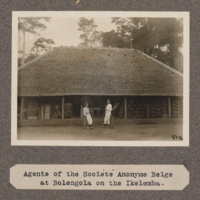
Agents of the Société Anonyme Belge at Bolengola on the Ikelemba
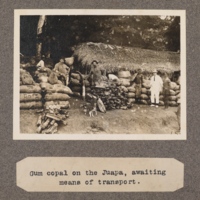
Gum copal on the Juapa, awaiting means of transport
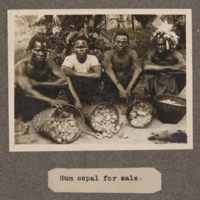
Gum copal for sale
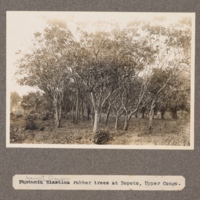
Manihot glaziovii rubber trees at Bopoto, upper Congo
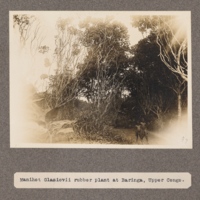
Manihot glaziovii rubber plant at Baringa, upper Congo
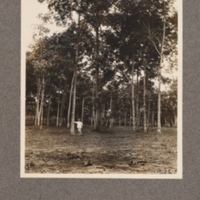
Hevea braziliensis at Mongai, Kasai District
